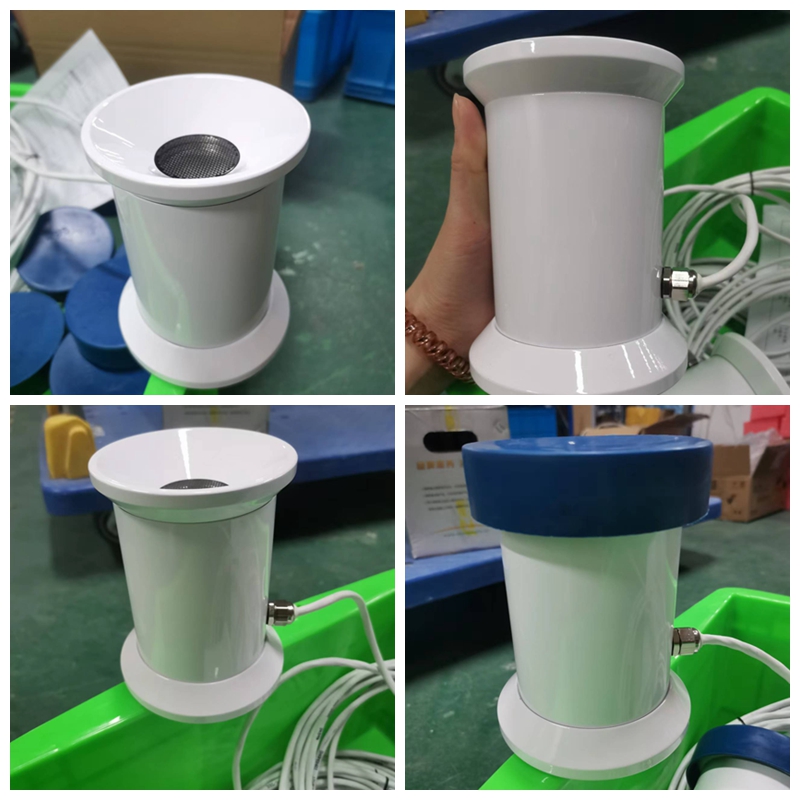

— Blogs —
—Products—
 Consumer hotline +8618073152920
Consumer hotline +8618073152920 WhatsApp:+8615367865107
Address:Room 102, District D, Houhu Industrial Park, Yuelu District, Changsha City, Hunan Province, China
Product knowledge
Time:2023-08-20 17:27:31 Popularity:676
With the advent of winter, cold air visits frequently, bringing not only cooling and windy weather, but also snowfall. The bringing of snowfall weather may not only affect people's daily life travelling, but also may affect the city's transport, industrial production, agricultural production and many other fields, so it is especially important to do a good job of snow monitoring in winter.
We recommend another meteorological monitoring product that can sense the amount of snow - NBL-W-SNOW snow monitoring sensor,a snow depth sensor is an instrument for snow depth monitoring, a sensor that uses ultrasonic technology to detect the distance to the snow surface. which has high sensitivity, strong anti-interference ability and high accuracy.
NBL-W-SNOW ultrasonic snow depth sensor parameters:
Power supply mode: utility power
Power supply voltage: DC 12V
Communication mode: RS485
Power consumption: Room temperature: 180mW
Room temperature: 180mW
Low temperature (<5℃) turn on heating: 3W
Working environment:-40-50℃;≤100%RH
Storage environment:-40-65℃;≤100%RH
Measuring range:0-1000mm
Measurement accuracy:±0.1%FS

In the installation of the use of snow depth sensors, need to pay special attention to the installation bracket should be kept horizontal, the sensor's reflection of the ground it is best to do horizontal processing, reflective point within a radius of 1 metre should be ensured to avoid interference with weeds.
ultrasonic snow depth sensors have a wide range of applications.
1. Avalanche warning. Ultra-sonic snow depth sensors can measure the depth of snow in real-time, providing accurate snow information. This is crucial for avalanche warning systems, helping to take timely safety measures and reduce avalanche accidents.
2. Traffic management. In areas with heavy snowfall, ultra-sonic snow depth sensors can monitor the depth of snow on roads, providing timely snow data to traffic management authorities. This helps decision-makers take necessary snow clearance measures, ensuring smooth roads and traffic safety.
3. Agriculture and water resource management. Understanding snow depth is important for crop growth and irrigation in agricultural areas. Ultra-sonic snow depth sensors can provide accurate snow depth data, helping farmers and water resource managers make informed decisions about crop planting and irrigation plans.
4. Meteorological research. Ultra-sonic snow depth sensors can be used in meteorological research, helping scientists understand the impact of snow cover on climate change and ecosystems. By collecting comprehensive snow depth data, in-depth studies can be conducted on the formation, melting, and movement processes of snow.
5. Construction engineering: In construction engineering, knowing the impact of snow cover on climate change and ecosystems. In construction engineering, knowing the impact of snow accumulation on building loads and structural safety is essential. Ultra-sonic snow depth sensors can provide snow depth data, assisting engineers in evaluating the snow resistance capacity of designs and ensuring the safety and stability of buildings during snowy seasons.
In summary, ultrasonic snow depth sensors are widely used in avalanche warning, traffic management, agriculture and water resource management, meteorological research, and construction engineering. They provide accurate snow information to relevant industries, helping decision-makers make informed decisions and take appropriate measures.
Related recommendations
Sensors & Weather Stations Catalog
Agriculture Sensors and Weather Stations Catalog-NiuBoL.pdf
Weather Stations Catalog-NiuBoL.pdf
Related products
 Combined air temperature and relative humidity sensor
Combined air temperature and relative humidity sensor Soil Moisture Temperature sensor for irrigation
Soil Moisture Temperature sensor for irrigation Soil pH sensor RS485 soil Testing instrument soil ph meter for agriculture
Soil pH sensor RS485 soil Testing instrument soil ph meter for agriculture Wind Speed sensor Output Modbus/RS485/Analog/0-5V/4-20mA
Wind Speed sensor Output Modbus/RS485/Analog/0-5V/4-20mA Tipping bucket rain gauge for weather monitoring auto rainfall sensor RS485/Outdoor/stainless steel
Tipping bucket rain gauge for weather monitoring auto rainfall sensor RS485/Outdoor/stainless steel Pyranometer Solar Radiation Sensor 4-20mA/RS485
Pyranometer Solar Radiation Sensor 4-20mA/RS485
Screenshot, WhatsApp to identify the QR code
WhatsApp number:+8615367865107
(Click on WhatsApp to copy and add friends)